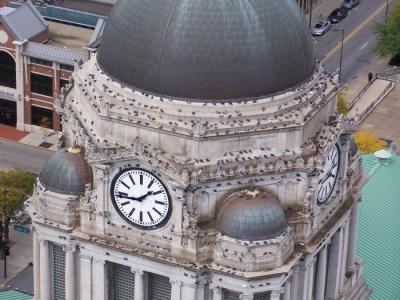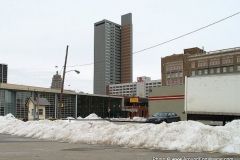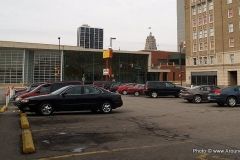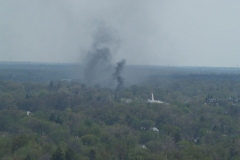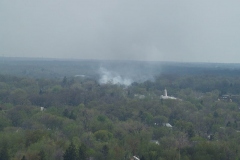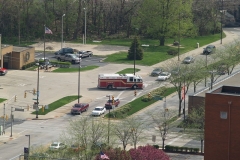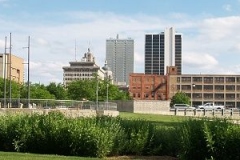The News-Sentinel, via Kevin Leininger, is reporting that plans are being developed that will eliminate or reduce the downtown pigeon population.
In part:
[…] Working with Purdue University and the U.S. Department of Agriculture, local officials are developing a plan to reduce or eliminate the pigeons that are damaging numerous downtown buildings, including the 100-year-old Courthouse. Although only $15,000 has been pledged so far – $5,000 each from the city, county and Downtown Improvement District – County Council members indicated Thursday they would be willing to consider a larger contribution to protect the taxpayers’ imminent investment in the Courthouse. A contract to repair and tuck-point the building’s limestone exterior could be approved as early as next month.
The program would first try to eliminate environmental factors promoting the pigeon’s population growth, including the presence of at least two pigeon coops downtown and empty buildings that provide sanctuary for the birds. Pigeons could be trapped and killed, and if that fails, even some kind of toxic solution is possible. But the use of poison could pose public-relations problems, making it the last resort, according to DID President Richard Davis.
[…] Davis said his organization, which is funded by local government and downtown property owners, begin investigating the pigeon problem late last year after several building owners expressed concerns about bird-related damage. “They said the level of (pigeon) activity is unprecedented,” Davis said.
[…] Dealing with pigeon-raising humans may be difficult, however, because Davis said it’s unclear whether downtown coops violate any laws. If necessary, he said, City Council may be asked to make keeping pigeons illegal.
But that won’t solve the problem, Davis knows. Neither will $40,000, which represents just one year’s expense. Controlling the pigeon population will require ongoing attention, he said – and funding. Efforts to raise more money from property owners have been unsuccessful so far, however.
A new plan is needed, Commissioner Linda Bloom said, because “We’ve tried sounds, but the pigeons love that. And barbed wire hasn’t worked, either.” The wire mesh around the top of the City-County Building doesn’t hurt the birds, but is sharp enough to keep them from landing. Recorded bird noises were tried in the City-County Building parking garage.
Peregrine falcons were introduced downtown as early as 1992. But because of their limited numbers and the ability to eat just one pigeon per falcon per day, they have been unable to control the far larger pigeon population that has forced the county to remove more than 10 gallons of acidic droppings from the Courthouse roof twice each year. Concerns about dung-related histoplasmosis caused the Owens County Courthouse to close in 2002 while workers removed 70 pounds of droppings from above a ceiling.
Here’s a photo I took back on January 23, 2008. Â The scene still looks the same, however more of the droppings are now evident.
This is a story I’ve been following.
Once again, however, Leininger’s story raises more questions than it answers. Â (Imagine that?)
- What are the other “numerous” buildings being damaged?
- There are pigeon coops downtown? Â I know that’s common in New York City, but here?
- Is protecting other buildings the responsibility of City and County government, or for that matter anyone but the building’s owner?
- Does the unsuccesful efforts to raise more money from downtown property owners include those owners whose very buildings are affected?
- Is poison, or even “trapping and killing” appropriate? Â If this posed imminent danger to humans, then that could possibly justify such drastic action, but… Â Trapping and killing sounds pretty labor intensive to me as well. Â Poison? Â Who wants that laying around? Â You’re just asking for trouble there.
- “We’ve tried sounds, but the pigeons love that.” Â Really? Â How do you explain the success of the Lincoln Tower with it’s recorded noises? Â The Tower is a bit different from a parking garage in that there’s no place to get inside the building to escape the noise and subsequent “danger”. Â In other words, once a pigeon can get through to the inside of the parking deck, their perception of “danger” drops.
- Is the level of pigeon activity that unprecedented? Â In my opinion, it’s been at a high level for the last few years. Â I don’t think it’s worse, it’s certainly not better, but to say it’s at an “unprecedented level” is not entirely accurate either.
Again, my issue is with the way this article has been presented.

